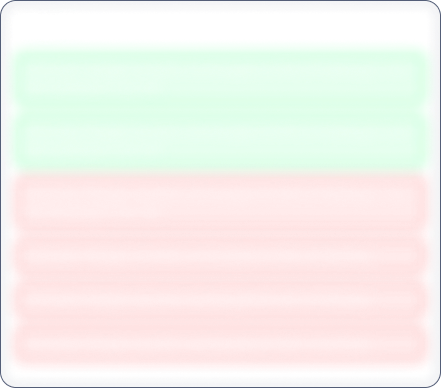Year End Sale 50% off
Jinkushal Industries

No Data Available
Investor Sentiment
Jinkushal Industries Share price and Fundamental Analysis
Key Metrics
Stock Returns
Stock Heatmap

No Stocks
Smart Score

Unlock Smart Score
See Detailed Analysis & Insights


Unlock Insights
See Detailed Analysis & Insights
Technicals
Returns Calculator
If you would have investedResearch Report
No Research Report
Corporate Action

No Data Available
Financials
Key Ratios
ROE
Avg ROE (3 Yrs) : NaN%
ROCE
Avg ROCE (3 Yrs) : NaN%
ROA
Avg ROA (3 Yrs) : NaN%
NPM
Avg NPM (3 Yrs) : NaN%
Dividend History
5 Year FactSheet
Documents

No Data Available
News
Jinkushal Industries Management and History
Company Management


Unlock Management Data
See Detailed Analysis & Insights
Company History
Jinkushal Industries Limited was originally incorporated as Zenith Tie-Up Private Limited', a private limited company, dated November 27, 2007, issued by the Registrar of Companies, West Bengal. Subsequently, Company changed its name from Zenith Tie-Up Private Limited' to Jinkushal Ispat & Power Private Limited' dated October 20, 2009 and from Jinkushal Ispat & Power Private Limited' to Jinkushal Industries Private Limited' pursuant to a fresh certificate of incorporation dated January 8, 2014. Subsequently, Company was converted into a public limited company and a fresh certificate of incorporation dated October 30, 2024 was issued by the Registrar of Companies, Central Processing Center, recording the change in the name to Jinkushal Industries Limited'.
The Company is engaged in export trading of new/customized and used/refurbished construction machines in global markets. It primarily operate across three primary business verticals; (i) export trading of customized, modified and accessorized new construction machines; (ii) export trading of used/refurbished construction machines; and (iii) export trading of its own brand HexL' construction machines to a diverse international customer base.
Apart from these, it specialize in export trading of construction machines such as hydraulic excavators, motor graders, backhoe loaders, soil compactors, wheel loaders, bulldozers, cranes and asphalt pavers. The ownership of the Company was taken over by the existing promoters, in 2009 and the business of renting in construction equipment started during the year 2009. Later, it ventured into the exports of used construction equipment in 2017.
The Company acquired the overseas Wholly Owned Subsidiary in the UAE, Dubai by the name of 'Hexco Global, Jafza' in 2024.
Company is planning an IPO of aggregating 96,50,000 equity shares of Rs 10 each comprising a fresh issue of 86,50,000 equity shares and 10,00,000 equity shares through offer for sale.
Jinkushal Industries Share Price
Jinkushal Industries share price reflects investor sentiment toward the company and is impacted by various factors such as financial performance, market trends, and economic conditions. Share price is an indicator which shows the current value of the company's shares at which buyers or sellers can transact.
Jinkushal Industries Market Cap
Market capitalization of Jinkushal Industries indicates the total value of its outstanding shares. Marketcap is calculated by multiplying share price and outstanding shares of the company. It is a helpful metric for assessing the company's size and market Valuation. It also helps investors understand how Jinkushal Industries is valued compared to its competitors.
Jinkushal Industries PE Ratio
Jinkushal Industries PE ratio helps investors understand what is the market value of each stock compared to Jinkushal Industries 's earnings. A PE ratio higher than the average industry PE could indicate an overvaluation of the stock, whereas a lower PE compared to the average industry PE could indicate an undervaluation.
Jinkushal Industries PEG Ratio
The PEG ratio of Jinkushal Industries evaluates its PE ratio in relation to its growth rate. A PEG ratio of 1 indicates a fair value, a PEG ratio of less than 1 indicates undervaluation, and a PEG ratio of more than 1 indicates overvaluation.
Jinkushal Industries ROE (Return on Equity)
Return on Equity (ROE) measures how effectively Jinkushal Industries generates profit from shareholders' equity. A higher ROE of more than 20% indicates better financial performance in terms of profitability.
Jinkushal Industries ROCE (Return on Capital Employed)
Return on Capital Employed (ROCE) evaluates the profitability of Jinkushal Industries in relation to its capital employed. In simple terms, ROCE provides insight to investors as to how well the company is utilizing the capital deployed. A high ROCE of more than 20% shows that the business is making profitable use of its capital.
Jinkushal Industries Total Debt
Total debt of Jinkushal Industries shows how much the company owes to either banks or individual creditors. In simple terms, this is the amount the company has to repay. Total debt can be a very useful metric to show the financial health of the company. Total debt more than equity is considered to be a bad sign.
Jinkushal Industries Debt to Equity Ratio
The Debt-to-Equity (DE) ratio of Jinkushal Industries compares its total debt to shareholders' equity. A higher Debt to Equity ratio could indicate higher financial risk, while a lower ratio suggests that the company is managing its debt efficiently.
Jinkushal Industries CAGR (Compound Annual Growth Rate)
CAGR shows the consistent growth rate of Jinkushal Industries over a specific period, whether it is over a month, a year, or 10 years. It is a key metric to evaluate the company’s long-term growth potential. Main metrics for which CAGR is calculated are net sales, net profit, operating profit, and stock returns.
Jinkushal Industries Technical Analysis
Technical analysis of Jinkushal Industries helps investors get an insight into when they can enter or exit the stock. Key components of Jinkushal Industries Technical Analysis include:
Support Levels (S1, S2, S3)
There are usually multiple support levels, but the main support levels for a stock are S1, S2, S3. Support levels indicate price points where stock might get support from buyers, helping the stock stop falling and rise.
Resistance Levels (R1, R2, R3)
There are usually multiple resistance levels, but the main resistance levels for a stock are R1, R2, R3. Resistance levels represent price points where Jinkushal Industries shares often struggle to rise above due to selling pressure.
Jinkushal Industries Dividends
Dividends refer to the portion of the company’s profits distributed to its shareholders. Dividends are typically paid out in cash and reflect Jinkushal Industries ’s financial health and profitability.
Jinkushal Industries Bonus Shares
Bonus shares are usually given by companies to make the stock more affordable, increase liquidity, boost investor confidence, and more.
Jinkushal Industries Stock Split
Stock split increases the number of its outstanding shares by dividing each existing share into multiple shares. When the company offers a stock split, the face value of the stock reduces in the same proportion as the split ratio.
Jinkushal Industries Financials
The financials of Jinkushal Industries provide a complete view to investors about its net sales, net profit, operating profits, expenses, and overall financial health. Investors can analyze financial data to assess the company’s stability and also understand how the company has been growing financially.
Jinkushal Industries Profit and Loss Statements
The profit and loss statement of Jinkushal Industries highlights its net sales, net profit, total expenditure, and operating profits in the current financial year. This Profit and Loss statement is crucial for evaluating the profitability and financial stability of Jinkushal Industries .
Jinkushal Industries Balance Sheet
The balance sheet presents a snapshot of Jinkushal Industries ’s assets, liabilities, and equity of shareholders, providing insights into the financials of the company.
Jinkushal Industries Cashflow Statements
Cashflow statements track the company's cash inflows and outflows over a period. It is an essential tool for understanding how well the company manages its liquidity and finances.


